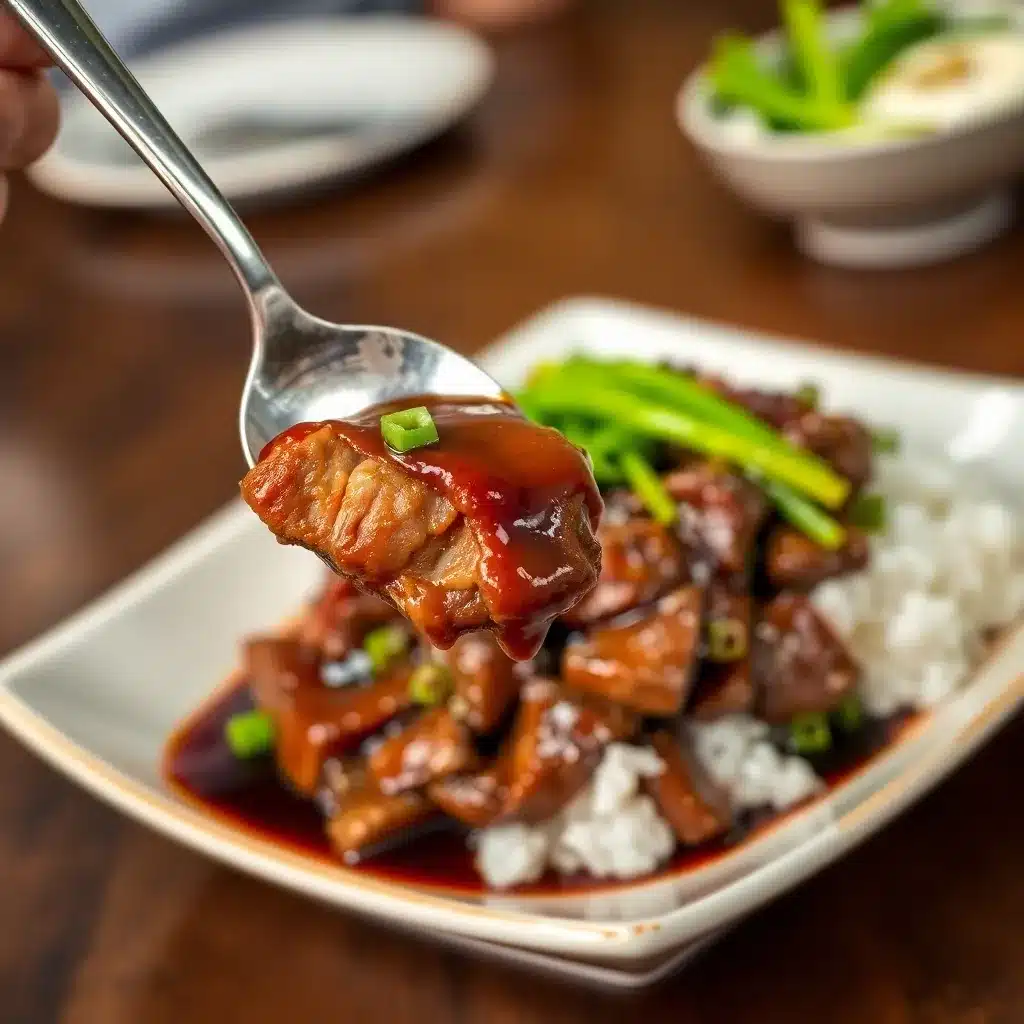I still remember the first time I made Mongolian Beef for a private client—some big-name exec who claimed he’d eaten “every stir-fry on the planet.” Ten minutes into dinner, he called me back into the dining room, eyes wide, fork dangling mid-air, and just said, “What did you do to this beef?” I just grinned. You don’t do Mongolian Beef. You respect it. That’s the trick.
Mongolian Beef isn’t Mongolian, first off. It’s more of a Chinese-American hybrid dish, born from the bold flavors of Taiwan’s barbecue scene and raised in the sizzling woks of suburban Chinese restaurants across the U.S. You’ll rarely, if ever, see it served in Mongolia.
But who cares?
It’s magic. Salty-sweet, crispy-tender, slicked in glossy soy-caramel sauce. And when it’s done right, it’s impossible to forget.
Ingredients & Substitutions for Mongolian Beef Magic
Here’s the thing with Mongolian Beef—the ingredient list is short, deceptively simple. But the quality of what you use? That’s where the difference lives.
Beef (Flank steak)
Flank is king. It’s lean, quick-cooking, and slices beautifully against the grain.
Substitution: Skirt steak works, sirloin in a pinch. Avoid ribeye—too fatty, changes the texture.
Cornstarch (for coating)
This is what gives the beef its signature crisp edges. Don’t skip it.
Substitution: Potato starch works great. Even arrowroot, if you’re feeling fancy.
Soy Sauce (regular & dark)
Use both if you can. Regular for saltiness, dark for depth and color.
Substitution: Tamari for gluten-free, coconut aminos for lower sodium (but it’ll taste a bit sweeter).
Brown Sugar
This is your caramel engine. It balances the soy and deepens the flavor.
Substitution: Palm sugar adds even more complexity. White sugar? Nah. It’ll work, but don’t expect fireworks.
Garlic & Ginger (fresh)
Don’t you dare use powder. Fresh garlic and ginger add bite and brightness that’s absolutely essential.
Substitution: None. Nope. Buy the fresh stuff.
Green Onions (scallions)
Add them right at the end. They pop in contrast to the rich sauce.
Substitution: Leeks are a last-resort sub. But honestly… just get the scallions.
Oil (high-heat like canola or peanut)
You want something neutral and capable of serious sizzle.
Substitution: Avocado oil is fine. Olive oil? Too fruity. Save it for salads.
Step-by-Step Instructions for Mongolian Beef Magic
Step 1: Slice the beef thin—like paper, not cardboard.
Cut against the grain. Use a sharp knife. If you’re struggling, freeze the steak for 30 minutes first. It firms it up and makes slicing way easier.
Step 2: Toss it with cornstarch.
Light coat only. Too much and it gets gummy. Too little and you lose the crunch. Think “dusting the beef in snow,” not “burying it in flour.”
Step 3: Sear in batches.
Crowd the pan and you’ll steam it. Not what you want. Medium-high heat, shimmering oil, beef in—don’t move it for 45 seconds. Let it crisp.
Step 4: Remove the beef. Make your sauce.
Add a touch more oil if needed, then in goes the garlic and ginger. Sauté for 20 seconds—don’t let ‘em burn. Then add soy sauces and brown sugar. Let it bubble and thicken a bit.
Step 5: Return beef to the pan.
Toss toss toss. Let the sauce cling and coat every shard of meat. Finish with sliced scallions. Off heat. Done.
Common mistakes?
Burning the garlic.
Overcrowding the pan.
Using too thick a sauce—it should coat, not drown.
And don’t add water to thin it. Let heat and time do their thing.
Want it spicy?
Add a teaspoon of chili crisp or a dash of crushed red pepper with the garlic. Sriracha? Sure, but go easy. This is beef, not wings.

Cooking Techniques & Science Behind Mongolian Beef Magic
Why cornstarch?
It forms a micro-crust. That’s what crisps up in the oil and soaks in the sauce without getting soggy. It also helps thicken the final glaze, almost invisibly.
Why flank steak?
Flank has long fibers. Cutting against the grain shortens those strands, making it super tender when cooked quickly. Overcook it and you’ve got jerky. So be fast.
Why sear, not simmer?
Browning = flavor. Maillard reaction. It’s chemistry’s gift to cooking. That crust on the beef? That’s caramelized protein. Gold.
Wok or pan?
Wok is ideal. The high sides help toss and sear quickly. But a wide, heavy skillet works just fine. Just don’t go with a nonstick—heat won’t get high enough.
Sauce too thick?
Add a splash of water only if your pan was too hot. Otherwise, adjust sugar ratios. Don’t dilute your flavors unless it’s an emergency.
Serving & Pairing Suggestions for Mongolian Beef Magic
Serve it hot—like hurry-your-guests-to-the-table hot.
Over jasmine rice? Classic. Soaks up the sauce like a sponge.
With steamed broccoli? Gorgeous color, clean crunch.
Try it with rice noodles if you’re feeling like changing lanes—just keep the sauce slightly thinner so it coats well.
Want a drink pairing?
Crisp lager. Light sake. Even a bold oolong works—it cuts the fat, balances the sweetness.
Plating tip:
Pile the beef high, sprinkle with sesame seeds, finish with more scallions sliced on the bias. Drizzle of reserved sauce around the rim. Boom—restaurant vibes at home.
Conclusion
Mongolian Beef isn’t fancy. It doesn’t need to be. But when you give it the respect it deserves—the right beef, the hot pan, the flash-fry treatment—it becomes something way more than the sum of its parts.
That sticky-sweet sauce? That crispy tender beef? It’s the kind of flavor that gets into your memory and refuses to leave.
And once you’ve mastered the base version, you can riff on it endlessly. Swap in tofu, toss in bell peppers, spike it with five-spice, or finish it with sesame oil. It’s yours now. Own it.
Last tip?
Don’t let leftovers sit too long. The crisp fades fast. But if you do reheat it—use a dry pan, high heat. Wake that beef back up.
FAQs
What cut of beef is best for Mongolian Beef?
Flank steak is ideal—it’s lean, slices thin, and sears beautifully. Skirt or sirloin are good alternatives, but always slice against the grain to keep it tender.
Can I make Mongolian Beef gluten-free?
Absolutely. Swap the soy sauce for tamari or coconut aminos, and make sure your cornstarch and brown sugar are certified gluten-free.
Why isn’t my beef crispy?
Too much moisture or overcrowding the pan are common culprits. Pat the beef dry before coating, use a hot pan, and cook in small batches.
Is Mongolian Beef spicy?
Traditionally, no. It leans sweet-savory. But you can easily dial up the heat by adding chili flakes, sambal, or spicy chili oil during cooking.
Can I prep Mongolian Beef ahead of time?
You can slice the beef and prep the sauce ahead, but for best texture, cook it fresh. Leftovers still taste great, but lose that iconic crisp.

Olivia P. is a seasoned food blogger at Tastywink, sharing delicious, easy-to-follow recipes inspired by him passion for home cooking. With years of culinary blogging experience, he brings flavor, creativity, and a personal touch to every dish.
